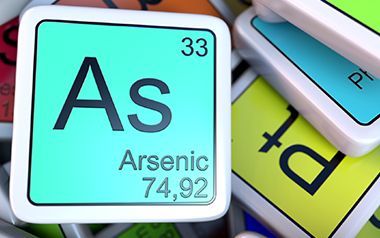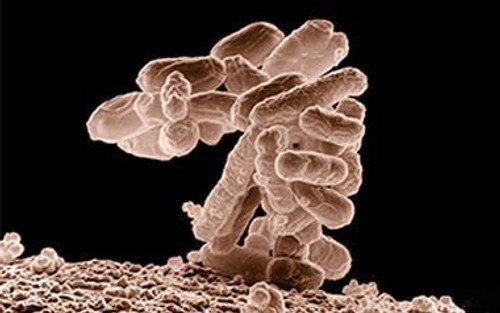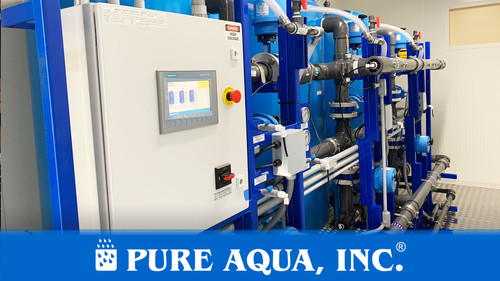Arsenic is an element that occurs naturally in rocks and soil and is used for a variety of purposes within agriculture and other industries. It is also a byproduct of copper smelting, mining, and coal burning and is one of the 10 chemical elements on the World Health Organization’s (WHO) main public health concern. Arsenic can enter the water supply from natural deposits in the earth or from industrial and agricultural pollution. Naturally occurring arsenic dissolves out of certain rock formations when groundwater levels drop significantly. Some industries in the United States release thousands of pounds of arsenic into the environment every year. Once released, arsenic remains in the environment for a long time. High arsenic levels in private wells may have originated from certain arsenic containing fertilizers used in the past or simply from industrial waste. Elevated levels of arsenic can have negative adverse effects on health; especially if found in drinking water. We will focus on two of the most efficient arsenic removal systems that have proven capability in removing arsenic from water: Ion-Exchange method and Reverse Osmosis system.
[custom-specifications]
Elevated level of arsenic is a concern to agriculture, irrigation, and drinking water industries. Due to the natural occurrence of this element, foods and crops inevitably intake arsenic from the soil. Therefore, it is incumbent to minimize the added exposure of this element from drinking water to prevent reaching toxicity levels in health. With adverse negative health effects ranging from vomiting to skin cancer, arsenic is a major public health concern. In January 2006, the U.S. Environmental Protection Agency (EPA) started enforcing the new arsenic limit of 10 parts per billion (ppb) in drinking water. The previous limit was 50 ppb. Arsenic is a known carcinogen, increasing the risk of cancer even at very low concentrations.
In the United States, this naturally occurring contaminant is usually found in the Southwest, Northeast and Midwest. However, there are multiple regions outside the US that contain high amounts of arsenic in the ground. Utilizing arsenic removal systems is in the best interest of public health according to the World Health Organization (WHO).
[/custom-specifications]
[custom-features]
Removing arsenic from water can take place by two methods: Ion-Exchange and Reverse Osmosis system. Both of these methods have been proven to be an effective solution to this issue. The difference between the two is the amount of contaminant removal. Ion-exchange focuses on a specific contaminant’s chemical charge in order to replace it with another harmless ion, while the RO system filters out multiple contaminants at once.
The two types of anion exchange resins commonly used today are Type 1 and Type 2 strongly basic anion exchange resins. These methods are used to remove sulfates, nitrates, arsenic and balance the alkalinity in the water. However, it is worth to use the tried-and-true method of arsenic removal—brine-regenerated strong base anion resin. Because the anion unit is salt regenerated, materials of construction may be similar to that of a water softener. The system will comprise of a mineral tank (FRP tank or Steel tank). The valve controller can be top or side mounted. If the system is big then we can use face piping with diaphragm or butterfly valves. Controllers can be a Digital Stager or PLC if more options are needed.
Since the concept of an Ion-Exchange (IX) runs similar to a softener system, the cost of operations and maintenance is comparatively low to a more precise filtration method like reverse osmosis (RO) or ultrafiltration (UF). However, in the case that one only has an issue with a specific element and is concerned with only removing that contaminant, the Selective Ion removal method would be the ideal solution.
Aside from Ion-Exchange method, arsenic removal from water can also be executed by using a Reverse Osmosis system. RO systems can filter up to 99% of total dissolved solids (TDS) and ions including arsenic from the water. The size of the pores in RO membranes are so fine that they are meant to only allow water molecules to pass. With this technology, RO systems are known to produce the most purified water quality. This system is perfect for the application of drinking water or any other application that requires the most purified form of water. RO systems simultaneously remove all other forms of contamination, therefore making this removal method an all-encompassing solution. This would be the ideal filtration method when there are other contaminants in the water that also need to be removed.
Related Projects:
- Arsenic Treatment Skid 6,000 GPD - USA
[/custom-features]
[custom-usage]
- Both are terrific arsenic removal systems
- Produces safe drinking water
- Prevents serious illnesses + diseases
Food and beverages
[/custom-usage]
-
Great system
It removes arsenic from water with high efficiency
- Related Project1:
- https://pureaqua.com/arsenic-treatment-skid-6000-gpd-usa/
- Related Project2:
- https://pureaqua.com/industrial-ro-unit-57000-gpd-ecuador/
- Related Project3:
- https://pureaqua.com/industrial-brackish-ro-system-600000-gpd-saudi-arabia/
- Related Project4:
- https://pureaqua.com/brackish-water-ro-system-173000-gpd-algeria/
 ENGLISH arrow_drop_down
ENGLISH arrow_drop_down
 ESPAÑOL
ESPAÑOL ???????
??????? PORTUGUÉS
PORTUGUÉS FRANÇAIS
FRANÇAIS














